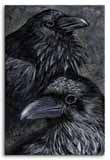|
|
|||||

|
Digging Composition 3 [slide 4] MOO-based writing, as I define it, is the use of rooms and objects in such a way that they convey meaning when explored by users. MOO-based writing uses MOO as a writing space. It is writing that is adapted for the MOO environment. MOO-based writing is not just cutting and pasting text into a room’s description or displaying text via a slide or note object. Rather, it uses rooms and objects to represent ideas and concepts in such a way that a message is communicated when users explore that space. [slide 5] For instance, a MOO space intended to teach about Julian of Norwich might use a room or series of rooms to recreate an anchorhold. Each room could be filled with objects relevant to the space such as furnishings, clothing, windows looking into the church and outside, books, a cat, even Julian herself. The room’s description would not explain what an anchorhold or anchoress were but would describe what one might see if they visited Julian. The objects’ descriptions would not only describe the objects but also explain their function. By examining the items in the room, a user would learn about life in a medieval anchorhold. [Slide 6] A key concept inherent to my notion of MOO-based writing is that MOO space needs to be explored in order to be read. Digging 1 | Digging 2 | Digging 4 | Digging 5 | Digging 6 | Digging 7 | Digging 8 | Digging 9 | Digging 10 |
||||
|
|||||